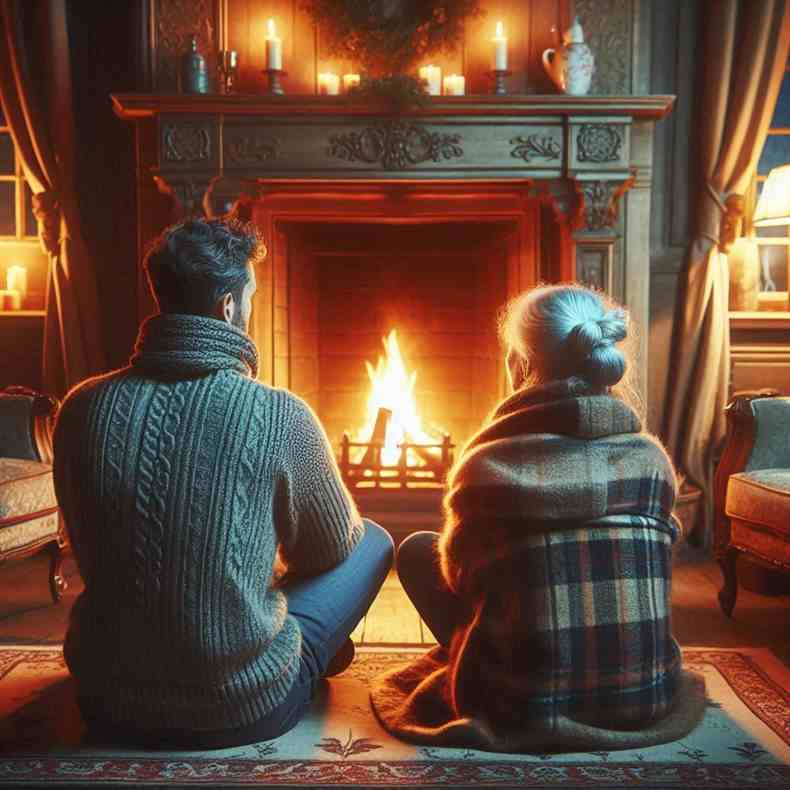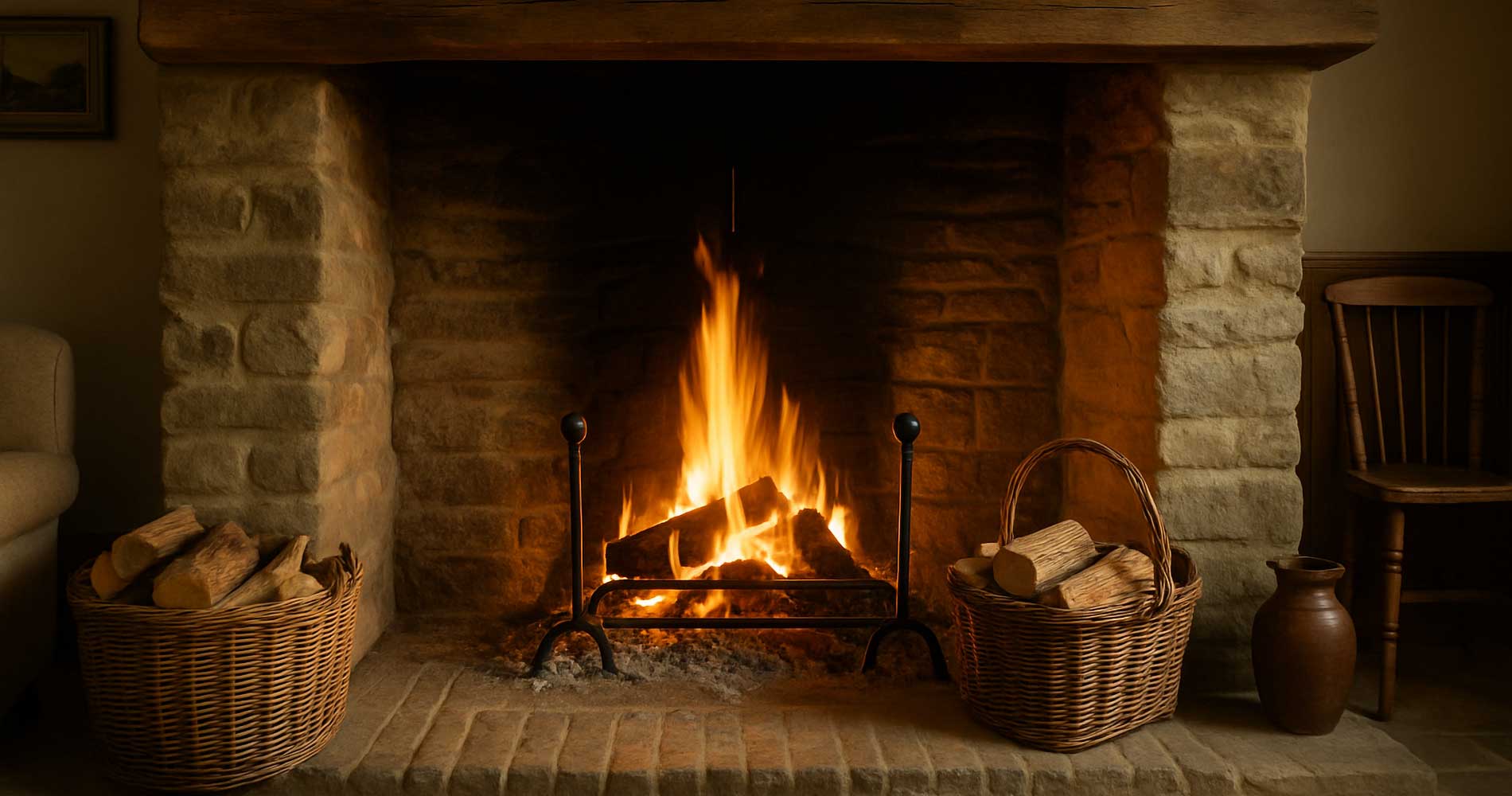The Fire That Drew Us In
Think about the last time you sat near a fire. Whether it was a glowing gas stove or a roaring open flame, there’s something quietly powerful about it, isn’t there? It warms more than the room—it softens conversation, draws people close, and wraps everything in a sense of comfort that’s hard to fake.
But this isn’t new. For thousands of years, the hearth has been more than just a place to cook or warm your feet. It's been the literal and symbolic heart of the home—across cultures, climates, and centuries. So let’s take a little journey. Bring a cushion and sit close—we’re going back to where it all began.
Stone Age Sparks: Fire for Survival
The earliest hearths weren’t about aesthetics. They were pits dug into caves or earth shelters, protected from wind, and stacked with wood, dung, or anything that would burn.
- Heat: Fire meant survival during long, cold nights
- Protection: Flames warded off predators
- Cooking: Made meat more digestible and food safer
- Community: Early humans gathered around for warmth and storytelling
It was messy, smoky, and inefficient—but it was home. And in its glow, language likely grew, myths were born, and cultures began to form.
The Hearth in Ancient Homes
As civilisations grew, so did the hearth's place in architecture and society. In ancient Greece, the hearth was sacred—a space dedicated to the goddess Hestia, protector of the home and family. Public hearths burned in town squares, symbolising unity.
In Roman times, domestic hearths were more refined. Think central braziers, clay chimneys, and ingenious flue systems.
- Romans used portable hearths (like hibachis) in villas
- Public bathhouses even featured radiant floor heating from fire chambers below
- The hearth still held spiritual value, linking generations and family honour
Even then, fire wasn’t just fire. It was ritual, memory, and symbol. A tether to ancestry and comfort.
Medieval Hearths and the Rise of the Great Hall
Fast-forward to the medieval era and things got a little smokier—literally. Most castles and longhouses had open hearths right in the centre of the room. The smoke simply rose and escaped through a hole in the roof (when it wasn’t lingering in the rafters).
But this central fire was no small deal. It defined social structure. Who sat closest to the fire? Nobles. Who braved the drafty edges? Servants and peasants. The hearth reflected hierarchy, wealth, and power.
- Central heating: Before chimneys, the open hearth was the only heat source
- Social core: Feasts, planning, and gossip—all happened by the flames
- Design shift: Eventually, hearths moved to the side wall, and chimneys appeared (hallelujah!)
So if you’ve ever grumbled about cleaning soot from your fireplace—spare a thought for those poor medieval cooks coughing through dinner.
Renaissance and Refinement
As Europe warmed to more decorative arts and refined living, so too did the fireplace. The Renaissance ushered in a new era of hearth design—ornate mantels, sculpted surrounds, and tiled firebacks. Fireplaces became status symbols, as well as functional must-haves.
In colder parts of Europe, the hearth was often tucked into alcoves or enclosed for more efficient heating—especially in homes with multiple levels.
- France: Think carved limestone, massive overmantels, and tapestries above the hearth
- England: Oak-panelled surrounds and wide Tudor chimneys
- Germany: Kachelofen—ceramic tiled stoves that retained heat for hours
These weren't just warming tools—they were conversation starters. Art, architecture, and fire—all dancing in harmony.
The Victorian Obsession
Ah, the Victorians. They gave us Queen Victoria, corsets, and an unwavering commitment to fireplace variety. By the mid-1800s, nearly every room had its own hearth—each one a slightly different shape, tile pattern, and finish.
The parlour fireplace? Grand and decorative. The kitchen hearth? Practical and iron-bound. Bedroom fireplaces? Small, shallow, and utterly charming.
- Decorative tiles often featured pastoral scenes, birds, or flowers
- Cast iron inserts helped reflect heat back into the room
- Fireplace mantels became shelves for clocks, photographs, and curios
The hearth became more than function—it was emotional. It showed off taste, told stories, and marked seasonal changes (hello, Christmas garlands).
Global Hearth Traditions
Not all hearths are carved from marble or set in stone walls. Around the world, cultures adapted the fireplace to suit their climate, cuisine, and beliefs.
- Japan: The irori—a sunken hearth in the floor, used for cooking and heating
- India: The chulha—a clay hearth used in rural homes for centuries
- Mexico: Adobe hearths used to cook tortillas and stews over open flame
- Nordic regions: Wood stoves became essential, often doubling as beds or benches
Whether humble or elaborate, every hearth reflects the soul of its setting. Fire binds people together. Across language, across continent, across time.

Fireplace Decline (And Revival)
With the rise of central heating, the fireplace took a bit of a backseat in the 20th century. Many were bricked up or replaced by electric heaters. Others were “modernised” in the name of minimalism—stripped of detail and character.
But lately? There’s a gentle resurgence. People are craving warmth. Not just physical warmth—but emotional warmth. A fire flickering in the corner. A mantel decorated with care. A space to gather.
And whether you choose gas, electric, or log-burning—when you light that fire, you’re taking part in a tradition far older than your postcode.
Final Sparks
Fireplaces aren’t just architectural features. They’re memory holders. Storytellers. Cultural anchors. They remind us of meals shared, winters survived, and lives lived together.
So next time you sit near the hearth, whether it’s a sleek wall insert or an old brick beauty—pause for a second. You’re not just warming your toes. You’re part of a long, glowing story. And it’s far from finished.
